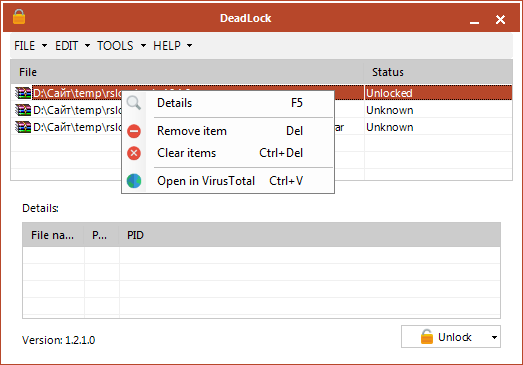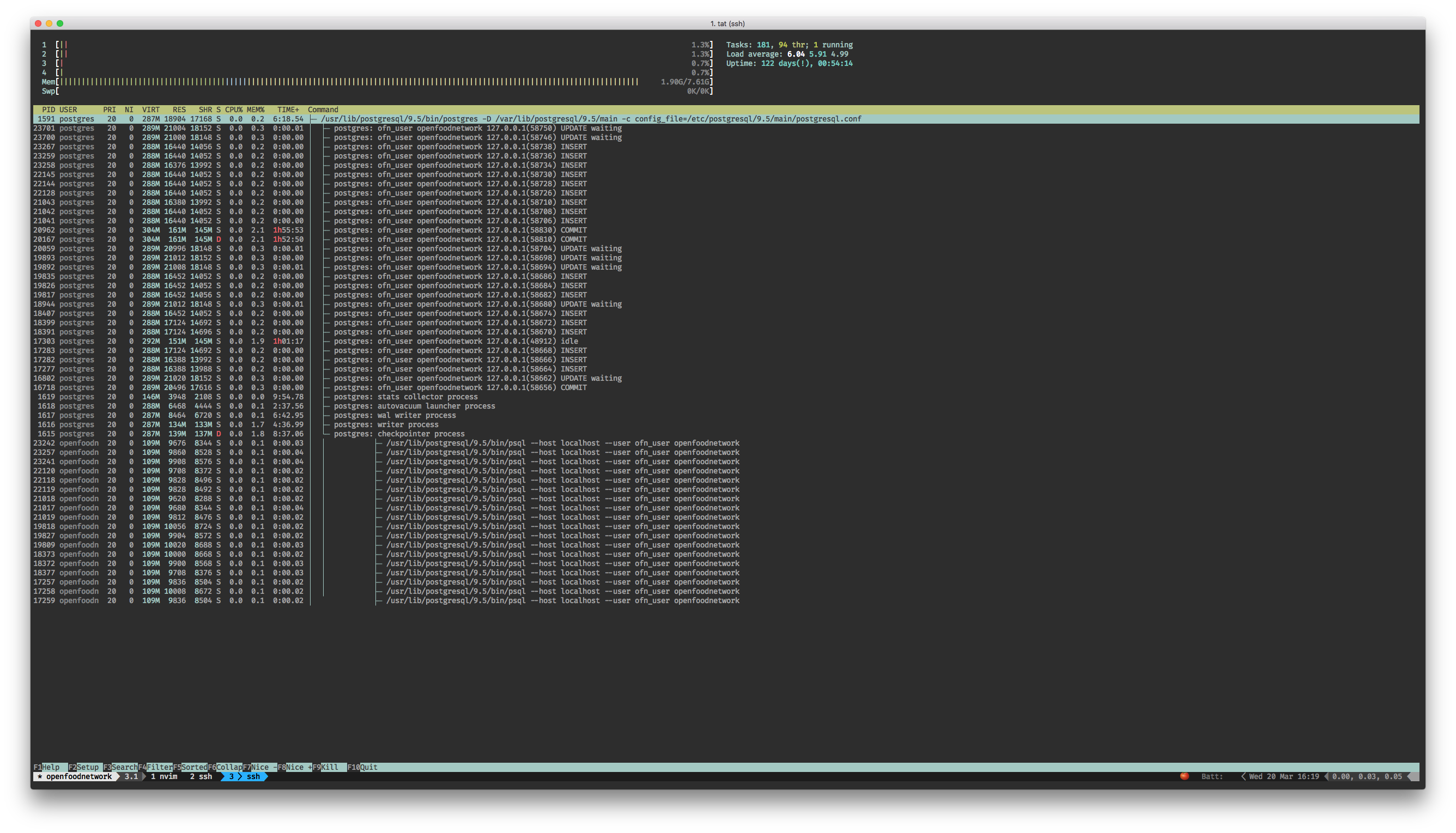
Process 31786 waits for ShareLock on transaction 918858 blocked by process 31712.ĬONTEXT: SQL statement "SELECT 1 FROM ONLY "public"."t1" x WHERE "id1" = $1 FOR SHARE OF x"Īfter setting "deadlock_timeout=3600000" we can see deadlock in pg_locks:ĭatid | datname | procpid | usesysid | usename | current_query | query_start With default value "deadlock_timeout=1000" error raises in first transaction:ĭETAIL: Process 31712 waits for ShareLock on tuple (0,10) of relation 451542 of database 391598 blocked by process > then be ready to commit or rollback as needed.

> If you run a commit or rollback on transaction 1 then transaction 3 will > That's not a deadlock, transaction 3 is simply waiting for transaction 1 Then be ready to commit or rollback as needed. If you run a commit or rollback on transaction 1 then transaction 3 will That's not a deadlock, transaction 3 is simply waiting for transaction 1 > Here we have deadlock for transactions 1 and 3. > Then three concurrent transaction start. > id1 integer references t1 on delete cascade, This parameter can only be set in the nf file or on the server command line.> I've encountered deadlock on postgresql 8.1. This controls how many rows on a single page can be predicate-locked before the lock is promoted to covering the whole page. This parameter can only be set in the nf file or on the server command line. The default is -2, which keeps the behavior from previous versions of PostgreSQL. Values greater than or equal to zero mean an absolute limit, while negative values mean max_pred_locks_per_transaction divided by the absolute value of this setting. This controls how many pages or tuples of a single relation can be predicate-locked before the lock is promoted to covering the whole relation. This parameter can only be set at server start. The default, 64, has generally been sufficient in testing, but you might need to raise this value if you have clients that touch many different tables in a single serializable transaction. This is not the number of rows that can be locked that value is unlimited. This parameter controls the average number of object locks allocated for each transaction individual transactions can lock more objects as long as the locks of all transactions fit in the lock table. The shared predicate lock table tracks locks on max_pred_locks_per_transaction * ( max_connections + max_prepared_transactions) objects (e.g., tables) hence, no more than this many distinct objects can be locked at any one time. max_pred_locks_per_transaction ( integer) Otherwise, queries will not be allowed in the standby server. When running a standby server, you must set this parameter to the same or higher value than on the primary server.

The default, 64, has historically proven sufficient, but you might need to raise this value if you have queries that touch many different tables in a single transaction, e.g., query of a parent table with many children. The shared lock table tracks locks on max_locks_per_transaction * ( max_connections + max_prepared_transactions) objects (e.g., tables) hence, no more than this many distinct objects can be locked at any one time. If you are trying to investigate locking delays you might want to set a shorter than normal deadlock_timeout. When log_lock_waits is set, this parameter also determines the amount of time to wait before a log message is issued about the lock wait. Ideally the setting should exceed your typical transaction time, so as to improve the odds that a lock will be released before the waiter decides to check for deadlock. On a heavily loaded server you might want to raise it. The default is one second ( 1s), which is probably about the smallest value you would want in practice. If this value is specified without units, it is taken as milliseconds. Increasing this value reduces the amount of time wasted in needless deadlock checks, but slows down reporting of real deadlock errors.

We optimistically assume that deadlocks are not common in production applications and just wait on the lock for a while before checking for a deadlock. The check for deadlock is relatively expensive, so the server doesn't run it every time it waits for a lock. This is the amount of time to wait on a lock before checking to see if there is a deadlock condition.


 0 kommentar(er)
0 kommentar(er)
